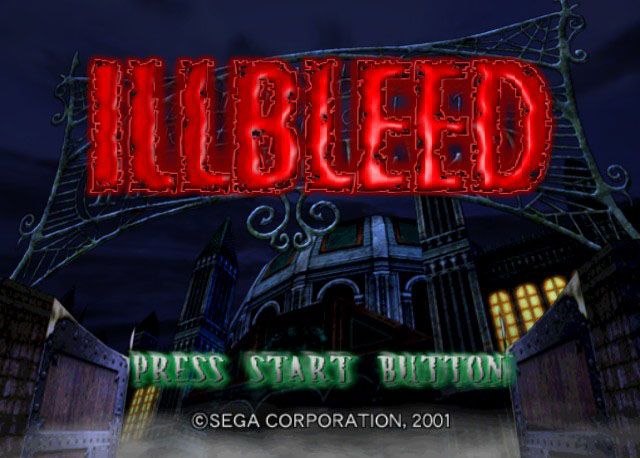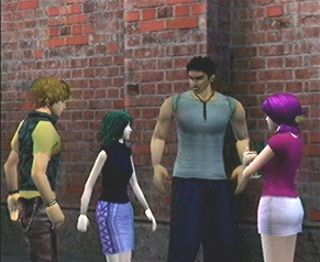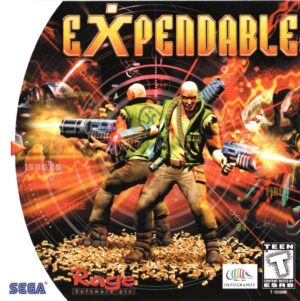Retro Replay Review
Gameplay
Illbleed’s gameplay revolves around a unique fusion of survival horror and amusement-park exploration. The core mechanic is the “Gore” and “Fear” detection system, which alerts players to hidden traps and lurking dangers. Navigating each attraction requires careful observation: clues might appear as subtle sound cues or visual distortions on the radar gauge, rewarding players who pay attention with the ability to dodge deadly surprises. This cat-and-mouse dynamic keeps players on edge, as ignoring a single hint can lead to a gruesome heart attack triggered by overwhelming fear.
Each attraction serves as a self-contained level, thematically based on one of Michael Reynolds’s pulp horror films. Whether you’re tiptoeing through the worm-infested drive-in theater of Revenge of the Worm or racing to disable traps in the Killer Department Store, Illbleed ensures variety in pacing and hazard design. Players collect prize money for surviving each park section, which can be spent on stat upgrades—such as boosting health, speed, or trap detection—and essential healing items. These RPG-lite elements add a layer of strategic depth, encouraging players to revisit earlier attractions to amass funds and improve their odds in tougher encounters.
Character selection also influences gameplay. After rescuing friends trapped in different attractions, you can switch between Eriko, Kevin, Randy, or Michel, each with distinct strengths and weaknesses. For instance, one character might be more resilient to shock damage while another moves faster or detects traps more effectively. This choice impacts not only the immediate survival chances but also long-term progression. Since you can only explore an attraction with a character who hasn’t been incapacitated, managing the roster and allocating resources becomes a crucial part of the challenge.
Graphics
Released for the Sega Dreamcast, Illbleed’s visual style embraces the limitations of late ’90s hardware while leaning into its B-movie aesthetic. Character models are blocky by today’s standards, but they exude charm with expressive face textures and exaggerated animations. The grainy environmental textures evoke a low-budget horror set, complete with flickering lights and shadowy corridors that enhance the game’s suspenseful atmosphere.
The diversity of the park’s attractions allows for constantly shifting scenery. One minute you’re navigating a run-down drive-in theater with pulsating neon signs, and the next you’re in a sterile supermarket strewn with cleaver-wielding—but decidedly artificial—mannequins. Animations for environmental traps, such as descending ceilings, forceful air blasts, and hidden dart launchers, are deliberately dramatic. These showy effects prioritize player readability over realism, ensuring you have at least a split second to react—but not always enough to escape unscathed.
Lighting and sound design work in tandem to reinforce tension. Darkened hallways and strobing lamps create disorientation, while ambient creaks and distant monster roars tell you that danger could emerge from any corner. Though the polygon count is modest, the creative use of light and shadow makes each attraction feel alive and unpredictable. In many ways, the game’s graphics heighten its campy horror theme, reminding you that you’re in a haunted amusement park designed by a mad B-movie auteur.
Story
Illbleed’s premise is delightfully pulpy: B-movie horror-film producer Michael Reynolds has constructed a movie-themed park where the scares are all too real. Four teenage horror aficionados—Eriko Christy, Kevin Kertsman, Randy Fairbanks, and Michel Waters—receive an irresistible invitation promising a million-dollar prize to anyone who survives the park’s terrors. When three friends rush in headlong and vanish, Eriko embarks on a solo rescue mission, determined to save them and uncover the park’s dark secrets.
The narrative unfolds primarily through brief cutscenes and in-game dialogue, which ramp up the tension without overwhelming the action. Each rescued friend provides insight into the attraction they were trapped in, revealing both the park’s mechanical horrors and the psychological games Reynolds has devised. While the story isn’t a deep character study, it strikes the perfect balance between campy dialogue and genuine suspense, making you care about the teens’ fates even as you brace for the next trap.
Beneath its B-movie veneer, Illbleed subtly critiques the horror genre itself, poking fun at clichés—from chainsaw-wielding maniacs to acid-spitting worms—while still delivering genuine frights. The park’s attractions serve as self-aware homages to classic horror tropes, and the game’s willingness to subvert expectations (for instance, by springing seemingly impossible traps) keeps the story unpredictable. Ultimately, the narrative drive of rescuing friends and surviving Reynolds’s twisted gauntlet provides enough motivation to push through the most heart-stopping moments.
Overall Experience
Illbleed offers a one-of-a-kind horror experience that remains memorable decades after its original release. Its blend of trap-detection mechanics, resource management, and alternating character abilities creates a compelling survival-horror formula. While it occasionally stumbles with uneven difficulty spikes, the satisfaction of narrowly avoiding a gruesome death—or uncovering a hidden shortcut—far outweighs the frustrations.
The game’s charm lies in its unapologetic B-movie attitude and relentless tension. You’ll find yourself scanning every corner, listening for audio cues, and mentally cataloging trap patterns to survive longer runs. The progression system rewards investment, as even small stat increases can mean the difference between life and death in later, more elaborate attractions. For fans of horror who crave something beyond jump scares and static camera angles, Illbleed’s park is an exhilarating playground of terror.
Whether you’re drawn by its quirky premise, its inventive gameplay loop, or its campy visual style, Illbleed stands out as a cult classic. It challenges players to think like both a horror director and a trap expert, blending theatrical flair with tangible gameplay stakes. For those willing to brave Michael Reynolds’s diabolical theme park, Illbleed delivers an unforgettable ride through the heart of horror entertainment.
 Retro Replay Retro Replay gaming reviews, news, emulation, geek stuff and more!
Retro Replay Retro Replay gaming reviews, news, emulation, geek stuff and more!









Reviews
There are no reviews yet.